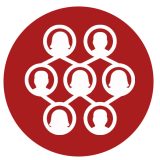There was not a systematic way to gather gender equality and diversity data in the institution.
Gathering gender disaggregated data regularly, quantitative and qualitative. Analysing these data in a dedicated Report so as to monitor gender and diversity in the organization
Problem (evidence)
Aims/objectives
To gather and report quantitative and qualitative data. To analyze these data in a dedicated Report so as to monitor the gender and diversity state of situation in the organization. To provide Head of Departments and management stakeholders with detailed information of the current situation and progress to inform further decisions and policies.
Resources
Human resources and rich data bases.
Brief outcomes
We managed to get gender relevant data for 2015–2017–2018. These proved to be an ideal starting point to create a “Gender equality trends in NIC” report that was used as hard evidence for decision-makers.
Unexpectedly, it was found that females in Grade “A” are better paid then their male colleagues. The opposite occurs for all other grades.
Key area
The governance bodies, key actors and decision-makers
Type of action
Data gathering and analysis
Organization
Kemijski Inštitut, National Institute of Chemistry
Research institute
Action level of implementation
Researchers/professors and technical and administrative staff, students
Implementation
The plan and the overall control of data gathering was led by the PLOTINA project team. Data was collected by people having access to data bases (HR department, financial department, project office, library,etc). We used “Quantitative assessment” as the basis for collecting relevant data.
Challenges
The data collection has taken a significant amount of time. People responsible for data provision (for example library, for M and F authorship) view this as an additional burden to their work. Thus, resistance was significant and difficult to overcome.
Moreover, knowledge of English was sometimes limited across different individuals. The PLOTINA team invested a lot of effort into translating the tables, sending reminders of deadlines, and providing support.
Coping strategies
It is important to insist on getting the data and draw information from other available annual institutional reports with relevant data. Getting senior management support when asking for data is helpful.
More detailed Outcomes/Impact
The decision-makers are now well aware of the situation in NIC regarding representation of men/women in different career grades, gender pay gap, and other issues that show disparities between genders and they are now discussing how to address these disparities.
Tips/strategies – Lessons learnt
In case the person collecting the data is not the same every year, it is important to ensure the comparability of the data. A good tip would be to write down all methodological issues and how they were resolved.
Reflection: what we would do differently
It would be useful to have a “translation table” from institutional research titles to external career Grades. Also, the quantitative assessment currently only takes into account researchers. This makes it hard for any of the staff in “support services” to see the concrete benefits and engage.
Unintended consequences
The NIC PLOTINA team has been able to have a discussion with some “data providers” on the qualitative aspects of the situation, which was an added bonus.


